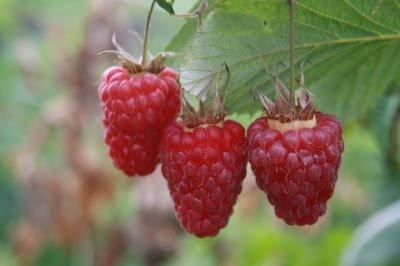
- Authors: Canada, Kolumbii Brytyjskiej
- Berry color: bright red
- Taste: dessert
- Ripening period: mid-late
- Berry weight, g: 5-7
- Yield: up to 5-6 kg per bush
- Frost resistance: winter hardy, -29 ° С
- Appointment: for fresh consumption, for processing
- Fruiting period: from mid-July to mid-August
- Keeping quality: Yes
Tulamin is one of the most sought-after varieties of raspberries, producing large and tasty fruits. The culture was bred by Canadian breeders, gained popularity among domestic gardeners.
Description of the variety
Today the Tulamin variety is the standard of raspberry flavor. The maximum height to which the plant rises is about 150 cm. The leaves of the raspberry have a rich green tint, the stem is distinguished by a small number of thorns. Fewer shoots are formed during growth compared to other varieties.
Features of the variety:
- hard cone-shaped fruits;
- frost resistance;
- immunity to diseases and pests.
Gardeners grow Tulamin both outdoors and in greenhouses.
Ripening terms
The first berries appear in mid-July. The bush continues to delight with fruits until mid-August.
Yield
With proper care, it will be possible to collect up to 5-6 kg of fragrant and large berries from one raspberry bush. Over time, the fruits become smaller, therefore, closer to autumn, the weight of one berry can decrease to 6 g.
Berries and their taste
Tulamin's fruits are sweet and large, with a rich pleasant aroma. During storage, the conical shape of the berries is preserved, the sizes also remain the same. The color of the fruits is bright red, the taste was attributed to the dessert.

Growing features
To achieve active growth of raspberry bushes, gardeners use two methods. Each will suit a specific occasion.
- Bush growing method. To do this, the seedlings of the variety are placed in separate pits measuring 40x50 cm.In this case, no more than 10 shoots should remain on the bush.
- Tapestry. The technique is also called tape. Before planting, the gardener digs a trench where he places the young bushes. The distance between the seedlings should be at least 40 cm.It is worth keeping 1 m between the trenches.
Also, for planting, gardeners often buy seedlings in which the root system is of an open type. This growing method has a number of nuances. Firstly, immediately after buying a seedling, it must be planted in the ground so that the plant does not die. Secondly, the soil must completely thaw and warm up.
Site selection and soil preparation
Raspberry Tulamin loves sunny areas without hills and elevations. The soil must be fertile, preferably a drainage layer. After planting, the plants are well watered. If it rained heavily before planting, it is worth reducing the amount of watering. Otherwise, the liquid will stagnate, causing the death of the plant.


Pruning
It is carried out after picking the berries and the flowering of the bush. It is recommended to cut off those shoots that bore fruit in the current year. Weak, diseased or deformed processes are also removed with them. At least 9 strong shoots should remain on the bush.

Watering and feeding
Tulamin requires abundant hydration. An insufficient amount of water will negatively affect the health of the bush. But at the same time, you should not overdo it either, otherwise the plant will rot. Watering recommendations:
- after planting, you need to moisten the soil with 1-2 buckets of water daily for a week;
- with the onset of heat, the volume of water should be increased to 15 liters;
- in the fall, the plant also needs watering to form new shoots.
As for fertilizers, the first top dressing is applied to the soil even before the seedlings are planted. In this case, you should give preference to compost, humus, ash or mineral fertilizers. Also, feeding should be carried out:
- at the beginning of summer;
- late autumn;
- during the flowering bush.
Gardeners advise using humus, complex fertilizing and peat.


Frost resistance and preparation for winter
Tulamin is frost resistant. Therefore, there are no special requirements for care before the onset of cold weather and during winter. Before the temperature drops, it is worth pruning, fertilizing and thoroughly watering the soil around the perimeter of the bush. If winter is coming with little snow, the bushes are covered with agrofibre.

Diseases and pests
The variety is distinguished by good immunity, the bushes are practically not exposed to diseases and do not attract pests. Interestingly, the berries also do not rot during storage.

Unfortunately, raspberries, like other plants, do not bypass various diseases and pests. Only by armed with the knowledge and the necessary means for this, you can cope with such troubles. To help the plant, it is very important to be able to recognize the disease in time and begin timely treatment.
Reproduction
Raspberries Tulamin are propagated vegetatively. This is the fastest and most efficient way. Breeding stages:
- the plant grows root shoots;
- gardeners separate the growth along with the rhizome and transplant it into the ground in the fall;
- in the spring, shoots are removed so that the nutrients go to the formation of existing plants.
At the end of summer, it is recommended that young bushes be placed in a greenhouse for several weeks in order to accelerate growth and strengthen the bushes.








































































